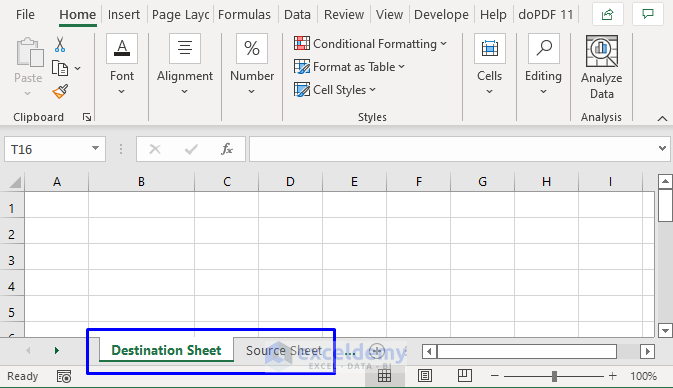7 Ways RNs Streamline Their Paperwork

In today's healthcare environment, efficiency is crucial. Registered Nurses (RNs) often face an overwhelming amount of paperwork, which can detract from their core responsibilities of patient care. Here, we'll explore seven innovative methods that RNs can use to streamline their paperwork, allowing more time for what truly matters—caring for patients.
1. Implementing Electronic Health Records (EHRs)

The transition from paper charts to Electronic Health Records (EHRs) is one of the most significant shifts in modern nursing. EHRs offer a digital repository for patient information, making it easier for RNs to access and update data instantly:
- Centralized information: EHRs provide a single source of patient data, accessible to all authorized personnel.
- Reduced redundancy: With EHRs, nurses enter information once, preventing repetitive data entry.
- Automated updates: Many EHR systems update patient records automatically when new information is received, like lab results.

💡 Note: While EHRs streamline many tasks, nurses must still be vigilant about data security and privacy compliance.
2. Utilizing Mobile Apps

Mobile health applications have become indispensable tools for nurses on the go. These apps enable nurses to:
- Record patient vitals and updates directly from the bedside.
- Access drug references and calculate dosages quickly.
- Check schedules, shift changes, and team communications.

3. Adopting Voice Recognition Technology

Voice recognition technology offers nurses a hands-free way to record notes, reducing the time spent on typing:
- Efficiency in documentation: Speak notes into a device, which transcribes them into the EHR.
- Reduced physical strain: Minimizing keyboard use can help prevent repetitive strain injuries.
- Error reduction: Voice-to-text can be edited for accuracy, but initial entries are faster.

4. Employing Scribes

Some facilities now use medical scribes to assist with documentation, freeing nurses to focus on patient interaction:
- Time-saving: Scribes can handle much of the administrative documentation.
- Quality care: Nurses can spend more time assessing and treating patients.
- Reduced stress: Less paperwork translates to lower stress levels for nurses.

5. Streamlining Processes with Checklists and Templates

Creating standardized templates and checklists for common tasks can significantly speed up the documentation process:
- Efficiency: Pre-filled forms save time by reducing the need for manual input.
- Consistency: Ensures all necessary information is captured uniformly.
- Training: New staff can quickly adapt to the required documentation standards.
| Template | Use |
|---|---|
| Patient Admission Template | Standardizes initial patient data collection |
| Vital Signs Checklist | Assures that all vital signs are recorded consistently |
| Discharge Summary Template | Provides a framework for thorough discharge information |

📋 Note: Remember to customize templates to fit specific care needs or unit protocols.
6. Regular Training and Teamwork

Ensuring all staff are well-versed in efficient documentation techniques can enhance teamwork and workflow:
- Continuous Education: Regular training sessions keep nurses updated on new technologies and procedures.
- Collaboration: Sharing best practices among team members can lead to innovative solutions.
- Peer Review: Reviewing documentation can improve quality and consistency.

7. Prioritizing Documentation

Learning to prioritize documentation tasks can help RNs manage their time more effectively:
- Immediate vs. Delayed: Determine which documentation can be delayed without compromising patient care.
- Batching Tasks: Group similar documentation tasks together to minimize context switching.
- Delegation: Assign administrative duties to ancillary staff when possible.
By integrating these seven strategies, RNs can not only streamline their paperwork but also enhance the quality of care they deliver. Prioritizing patient care while managing administrative tasks effectively will lead to a more harmonious balance in their daily work life.
The Wrap-up:
The shift to digital solutions, coupled with smart work practices like utilizing checklists and prioritizing tasks, has the potential to revolutionize how nurses handle their paperwork. It’s clear that by embracing technology, employing efficient documentation strategies, and fostering a collaborative environment, nurses can reduce their administrative load, thus improving both patient outcomes and their own job satisfaction. Remember, while paperwork is important, the patient’s health and well-being should always be the focus, with streamlined documentation supporting rather than hindering that goal.
How can EHRs improve patient care?

+
EHRs improve patient care by providing instant access to a patient’s entire medical history, reducing the chance of medical errors, and facilitating better communication among healthcare providers. This comprehensive and real-time access to data allows for more informed clinical decisions.
What are the risks of voice recognition technology in healthcare settings?

+
The primary concerns with voice recognition technology include privacy issues, accuracy in transcription, especially with medical terminology, and the potential for distraction from clinical tasks. Proper training and security measures are essential to mitigate these risks.
Is using a medical scribe cost-effective for healthcare facilities?

+
While there is an initial cost for hiring medical scribes, the efficiency they bring can lead to cost savings over time. They reduce the time nurses spend on documentation, potentially lowering overtime and helping nurses stay focused on patient care, which can indirectly improve facility efficiency and patient satisfaction.
Can streamlining paperwork improve nurse retention?

+
Yes, by reducing the administrative burden, nurses can focus more on providing care, which can increase job satisfaction. This increased satisfaction is often linked to higher nurse retention rates.
How often should documentation processes be reviewed in a healthcare setting?

+
Documentation processes should be reviewed at least annually or whenever there is a significant change in staff, technology, or procedures to ensure they remain efficient and aligned with best practices.



